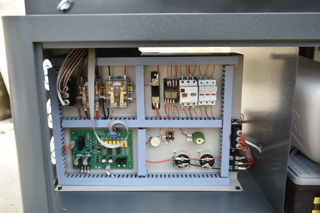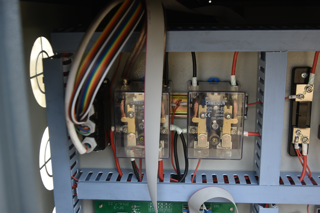Advancing Precision Manufacturing Through Micro-Drilling Technology
The manufacturing industry has witnessed a remarkable transformation with the advent of small hole drilling techniques. This sophisticated technology has revolutionized mold production, enabling manufacturers to achieve unprecedented levels of precision and efficiency. As industries continue to demand increasingly complex and miniaturized components, small hole drilling has emerged as a cornerstone of modern manufacturing processes.
Small hole drilling represents a specialized machining process that creates precise, microscopic holes in various materials, particularly crucial for mold production. This technology has become indispensable in creating intricate cooling channels, venting systems, and complex geometries that were previously impossible to achieve through conventional manufacturing methods.
The Technical Foundation of Small Hole Drilling
Advanced Drilling Equipment and Capabilities
Modern small hole drilling systems incorporate state-of-the-art CNC technology, high-precision spindles, and specialized micro-tools. These machines can achieve hole diameters as small as 0.1mm with exceptional accuracy and repeatability. The advanced equipment utilizes sophisticated control systems that monitor and adjust drilling parameters in real-time, ensuring optimal performance and consistency throughout the process.
The technology employs various drilling methods, including deep-hole drilling, gun drilling, and EDM drilling, each suited for specific applications in mold making. These systems often feature high-pressure coolant delivery systems that ensure proper chip evacuation and temperature control during the drilling process.
Material Compatibility and Processing Parameters
Small hole drilling technology accommodates a wide range of materials commonly used in mold production, including hardened steels, carbides, and various alloys. The process parameters are carefully optimized for each material type, considering factors such as hardness, thermal properties, and microstructure. This versatility makes small hole drilling an essential capability in modern mold shops.
Advanced coating technologies for drilling tools have significantly enhanced their durability and performance, allowing for longer tool life and more consistent results in challenging materials. These coatings reduce friction, heat generation, and tool wear, enabling more efficient and cost-effective production.
Enhancing Mold Performance Through Precise Cooling
Optimized Cooling Channel Design
Small hole drilling enables the creation of complex conformal cooling channels that follow the contours of the mold cavity. These precisely positioned channels ensure uniform heat distribution and removal during the molding process. The ability to place cooling lines closer to the mold surface results in faster cycle times and improved part quality.
The technology allows for the implementation of advanced cooling strategies, such as cascade cooling and selective cooling zones. These sophisticated approaches help maintain optimal temperature control throughout the molding cycle, reducing warpage and improving dimensional stability of the finished parts.
Thermal Management Benefits
The precise placement of small cooling channels significantly improves thermal management in injection molds. This enhanced temperature control leads to reduced cycle times, improved part quality, and increased production efficiency. Manufacturers can achieve up to 40% reduction in cooling time compared to conventional cooling methods.
Advanced thermal simulation software now incorporates small hole drilling capabilities in their analysis, allowing engineers to optimize cooling channel layouts before manufacturing. This integration of design and manufacturing technology ensures maximum effectiveness of the cooling system while minimizing production costs.

Impact on Production Efficiency and Quality
Cycle Time Reduction and Productivity Gains
The implementation of small hole drilling in mold making has led to significant improvements in production efficiency. The enhanced cooling capabilities result in shorter cycle times, allowing for increased production output. Many manufacturers report productivity gains of 20-30% after implementing optimized cooling channels created through small hole drilling.
The precision of small hole drilling also contributes to reduced setup times and fewer quality issues, resulting in more consistent production runs. This reliability translates to improved overall equipment effectiveness and reduced production costs.
Quality Improvements and Scrap Reduction
Small hole drilling technology enables better part quality through improved cooling and venting. The ability to create precise venting channels helps eliminate trapped gases and reduces defects such as burn marks and short shots. These quality improvements lead to significantly lower scrap rates and reduced material waste.
The technology also allows for more consistent part dimensions and surface finish, meeting increasingly stringent quality requirements across various industries. The precise control over cooling and venting results in fewer rejected parts and higher customer satisfaction.
Future Trends and Innovations
Integration with Industry 4.0
Small hole drilling technology is evolving to incorporate Industry 4.0 principles, including real-time monitoring, data analytics, and predictive maintenance capabilities. These advancements enable better process control and optimization, leading to improved efficiency and reduced downtime.
The integration of artificial intelligence and machine learning algorithms helps optimize drilling parameters and predict tool wear, ensuring consistent quality and maximum tool life. These smart manufacturing capabilities represent the future of small hole drilling in mold production.
Sustainable Manufacturing Impact
The precision and efficiency of small hole drilling contribute to more sustainable manufacturing practices. The technology enables reduced energy consumption through optimized cooling, less material waste through improved part quality, and longer tool life through advanced process control.
Environmental benefits extend to reduced coolant consumption and improved recycling capabilities due to more consistent part quality. These sustainability advantages align with growing industry demands for environmentally responsible manufacturing practices.
Frequently Asked Questions
What are the minimum hole sizes achievable with modern small hole drilling?
Modern small hole drilling technology can achieve hole diameters as small as 0.1mm with high precision and repeatability. The exact minimum size depends on factors such as material properties, depth-to-diameter ratio, and specific equipment capabilities.
How does small hole drilling impact mold maintenance requirements?
Small hole drilling typically results in reduced mold maintenance requirements due to better cooling efficiency and less thermal stress on the mold. However, proper maintenance procedures must be followed to prevent channel blockage and ensure optimal performance.
What materials are compatible with small hole drilling processes?
Small hole drilling can be performed on a wide range of materials including tool steels, stainless steels, aluminum alloys, and various other metals. The process parameters and tool selection are optimized for each specific material to ensure best results.




